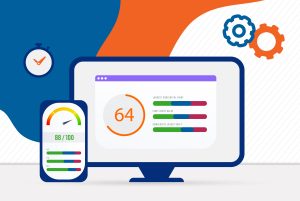 Responsive design is everywhere and comes up almost daily in our environment here at OffWhite. Nearly every one of our clients is asking about it, or for it, and we just applied it to our own website. We all interface with it daily on one of our multiple devices, but what exactly is the "responsive" in responsive design?
Responsive design is everywhere and comes up almost daily in our environment here at OffWhite. Nearly every one of our clients is asking about it, or for it, and we just applied it to our own website. We all interface with it daily on one of our multiple devices, but what exactly is the "responsive" in responsive design?
Responsive design is broadly defined as a programming technique which allows optimal display of a website on all types and sizes of device, be it a 21” iMac or the latest smart phone, from a single URL. In other words, the site responds to the device, not the user.
Responding to Audience
While from a technical standpoint, responding to a device is accurate, it is more important for your site to respond to accommodate your brand. The brand is not a logo, or a mark, it’s the opinion formed by your audience based on the collective of elements like the logo, collateral pieces, and language that make up your identity. Knowing what your audience prefers and uses most under what conditions and for what purpose should define how the site needs to respond in terms of brand presence.
Most developers focus on getting their site to scale down or up to fit either of two extreme viewing areas, sacrificing the integrity of the brand. As a result, there are a number of responsive design templates that do "cool" tricks to adapt to the device, with little consideration for truly adapting the content or message to the experience that brought about the need for responsive design to start with. By focusing on the one site fits all, the temptation is to target the least common denominator or in this case the device with the smallest view space. Currently, accommodating the smaller viewing platform is meeting the needs of the few and not the majority.
The user experience at a desktop is exponentially different than the experience on a phone. Many sites that are responsive work really well on one platform but deliver only a mediocre experience on another. The mindset of the user when at their desktop computer is not the same as it is when they surf or search from their phone, so the desktop interface experience of your site should not feel or act like the interface for the mobile site. In other words, developers and designers need to do a better job of accommodating the users, not just the device.
At OffWhite designing responsively means responding to our audience's desired experiences, not just their devices. It is important for sites to function properly on multiple devices from a single URL, but it is equally if not more important to deliver the experience that is optimized to the user and their mindset.


